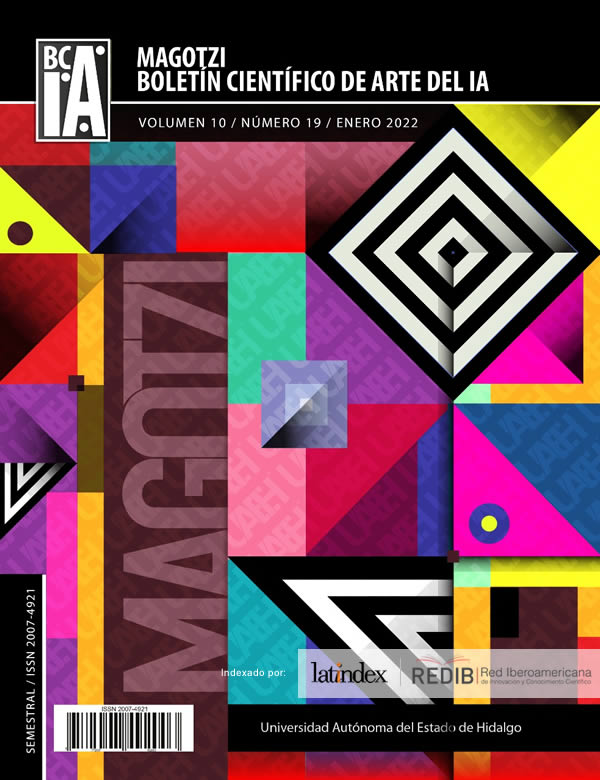Visual analysis of the representation of violence and power in a fashion photography
Abstract
This document presents a visual analysis of a fashion photograph belonging to Duncan Quinn brand campaign 2008, by describing, analyzing, interpreting, and explaining the clothing motifs/signs that are presented to formulate, in the first place, narratives that construct contemporary identities within discourses of gender and power. Second, an approach to fashion photography and the style is known as porn-chic (1970-2010) gave rise to this advertising image. In this sense, the conjectures presented at this document are a semiotic and hermeneutical analysis that brings the viewer closer to consideration on how clothing signs observed at the image generate discourses based on gender ideologies and imaginary about “the successful man” in consumer societies.
Downloads
References
Amercan-Fine-Art.Inc. (2016). Holliwood Collection of Frederick Mellinger. Recuperado el 20 de noviembre de 2019, de Holliwood Collection of Frederick Mellinger: http://www.frederickmellinger.com/
American-Fine-Art.Inc. (22 de febrero de 2013). The Hollywood Collection of Frederick Mellinger Unveiled. Recuperado el 18 de noviembre de 2019, de PRLOG Press Release Distrbution: https://www.prlog.org/12085744-the-hollywood-collection-of-frederick-mellinger-unveiled.html
Azahua, M. (2014). Retrato involuntario. El acto fotográfico como una forma de violencia. México: Tusquets .
Barhtes, R. (1973). Elemets of Semiology. New York: Hill and Wang.
Barrera Castañeda, C. (enero-junio de 2012). La seducción como Estética. Calle14: revista de investigación en el campo del arte, 6(8), 12-15.
Baudelaire, C. A. (2008). El pintor de la vida moderna (1863). Langre.
Baudrillard, J. V. (1978). Cultura y simulacro. Barcelona: Kairós.
Castiñeiras González, M. A. (1998). Introducción al método iconográfico. Barcelona: Ariel.
Díaz Soloaga, P. (19 de diciembre de 2001). "Porno-chic": un paso en falso de las marcas de moda. . Aceprensa. , 173(01).
Durango, L. (26 de septiembre de 2019). El origen de la corbata, una historia de amor y guerra. Obtenido de Excelsior: from https://www.gentleman.excelsior.com.mx/el-origen-de-la-corbata-una-historia-de-amor-y-guerra/
Dvornikova, A. (. (2014). Evolución, tendencias y perspectivas de futuro de la publicidad de moda en revistas especializadas. Universidad de Alicante.
Eco, U. (2005). Tratado de semiótica general. Segunda. México. D.F. : Debolsillo.
Erner, G. (2016). Víctimas de la moda: cómo se crea, por qué la seguimos. https://elibro-net.eu1.proxy.openathens.net/es/ereader/anahuac/45613?page=125: Gustavo Gili.
Flügel, J. C. (2020). Psicología del vestido. Melusina.
Feliu Albaladejo, Á. &.-P. (s.f.). La mujer en la publicidad: hacia nuevos discursos. 2010.
Gauli, J. C. (2000). El cuerpo en venta: relación entre arte y publicidad. Cátedra.
Hasenmueller, C. (1978). Panofsky, Iconography, and Semiotics. The Journal of Aesthetics and Art Criticism, 36(3), 289-301.
Lagarde, M. (2018). Género y feminismo: desarrollo humano y democracia. México: Siglo XXI Editores .
Leach, E. (1976). Culture and communication: The logic by which symbols. Cambridge University Press.
Lipovetsky, G. (2013). El imperio de lo efímero. Barcelona: Anagrama.
Navarro Beltrá, M. &. (2011). El sexismo publicitario: delimitación de conceptos e indicadores de género. Estudio empírico de la producción científica. Universidad de Alicante.
Psicorevista. (s/f). La Corbata como símbolo Sexual. Obtenido de Psicorevista: https://psicorevista.com/sexualidad/la-corbata-como-simbolo-sexual/
Ricoeur, P. (2001). Del texto a la acción ensayos de hermenéutica II. Aires: FCE.
Rosso, P. (2011). Aplicaicones fotograficas. Fotografía de moda. Publicidad-moda.
Rouillé, A. (2017). La fotografía: entre documento y arte contemporáneo. . México: Herder.
Schneier, M. (21 de 01 de 2015). El trabajo de Guy Bourdin resiste la prueba del tiempo. The New York Times, págs. https://www.nytimes.com/2015/01/22/fashion/guy-bourdins-work-stands-the-test-of-time.html.
Tornero, A. (2009). Semiótica y hermenéutica. Inventio, la génesis de la cultura universitaria en Morelos, 10, 69-76.
Vázque Martínez, C. (2015). El síndrome de la novia muerta en publicidad de moda y lujo. Obtenido de Universidad de Malaga: https://riuma.uma.es/xmlui/handle/10630/10489












